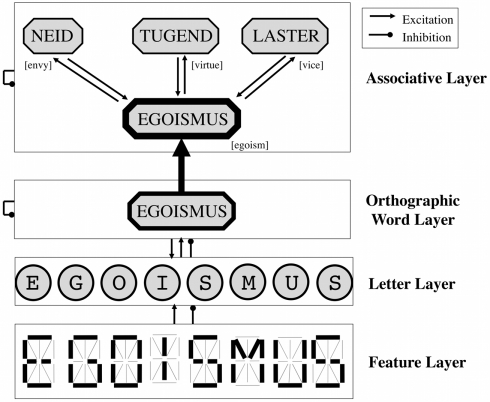Figure 1.
Basic architecture of the AROM. The lower three layers correspond to previous IAMs (McClelland and Rumelhart, 1981; Grainger and Jacobs, 1996). Target stimuli are presented to the feature units, which in turn activate the letter and (orthographic) word layer. The associative layer’s unit of the target receives the word identification signal from the orthographic word layer. Moreover, associated item units contained in the stimulus set are activated by the target unit, and activate the target in turn. Thus activations to item units with many associated items are greater, which predicts their higher probability of “yes” responses. Translations are bracketed.

